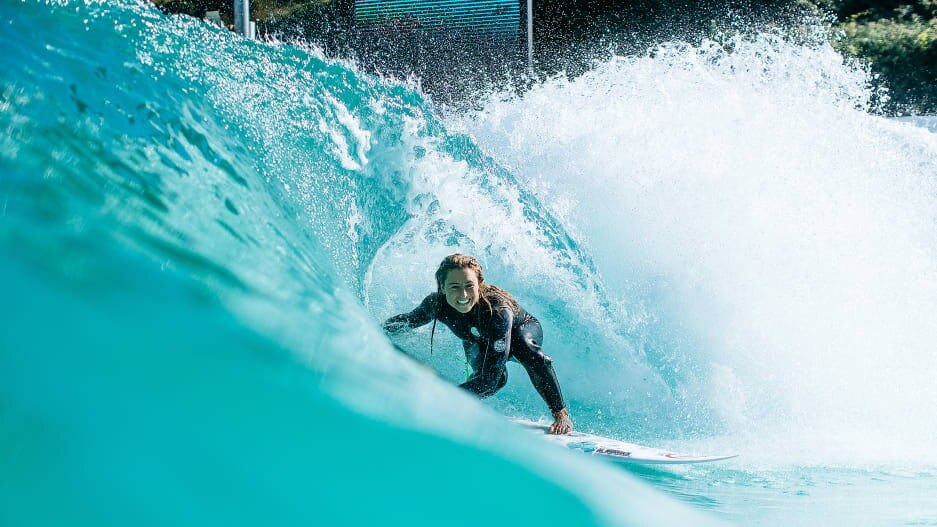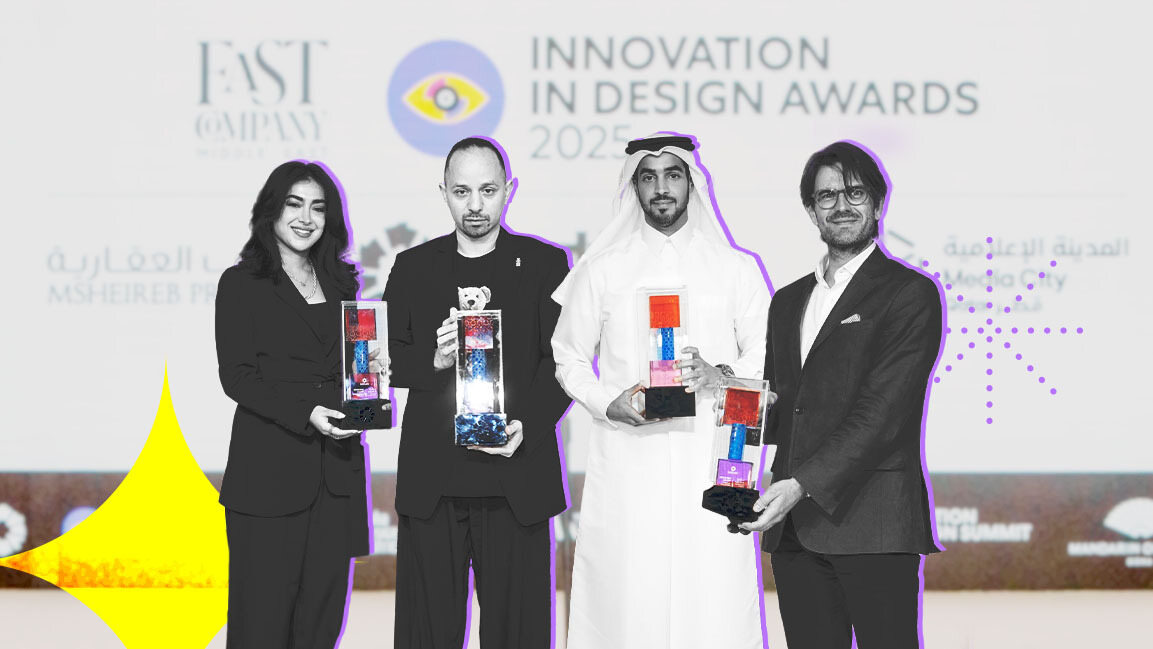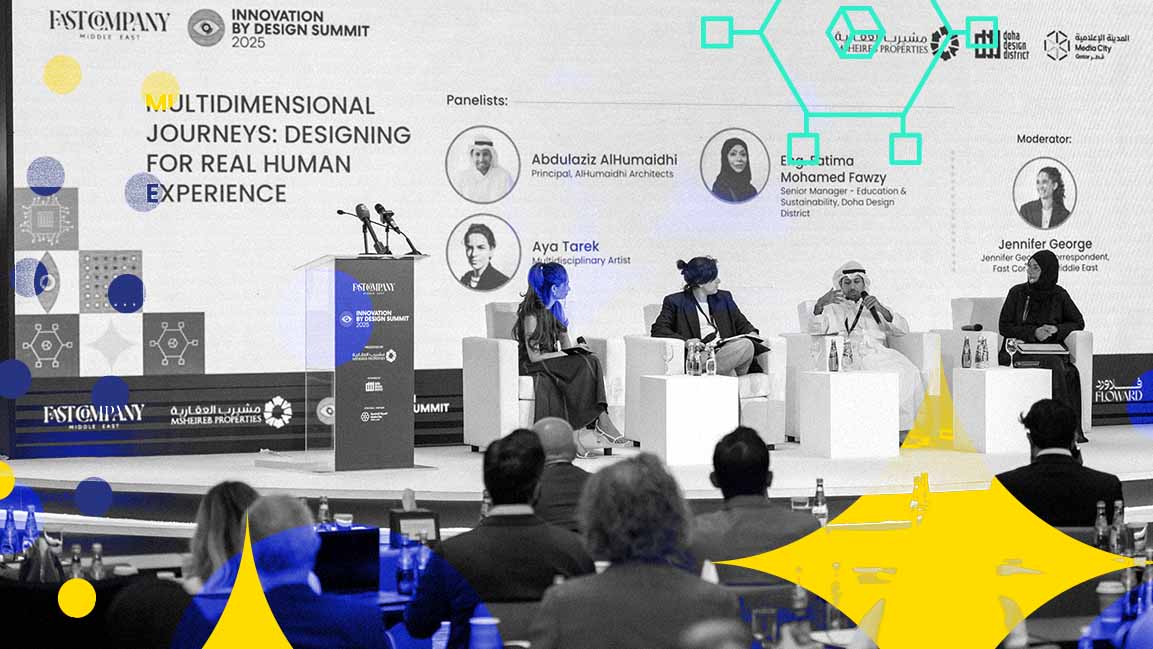- | 8:00 am
Goodbye golf. The next big luxury amenity is a big wave surf pool
Someday, people could look out their windows and see surfers carving through picture-perfect barrels, hundreds of miles from the nearest ocean.

More and more, it seems that real estate developments have to have a hook. Look at any golf course community around the world. Or the growing number of “lifestyle center” shopping malls built around strollable faux streets. Or even the boxing gyms, bars, and rooftop minigolf courses being integrated into once-boring office buildings. Amenities abound, and they’re getting weirder.
The newest type of amenity coming to real estate projects could be one of the most unexpected: a five acre synthetic lagoon capable of generating surfable waves up to six feet high. These electro-mechanically produced waves bring surfing far from the shores of the world’s oceans and right into the center of a new kind of development project.

Aventuur is an upstart builder of what it’s calling integrated surf park developments, mixed use projects of hotels, housing, restaurants, and wellness facilities built around lagoons equipped with wave-generating technology. The company has just announced plans to bring these projects to 11 cities across North America, including New York, Los Angeles, Denver, Dallas, Nashville, Phoenix, and Baja California. The first project, in a city the company declined to disclose, is actively being developed and could open by 2026. One day soon, visitors and residents could wake up and look out their windows to see surfers carving through picture-perfect barrels hundreds of miles from the nearest ocean.
These surf park developments utilize wave-making technology developed by the Spanish company Wavegarden that is capable of generating more than 900 waves per hour. Placed in a specially designed five-acre lagoon, the technology creates reliably surfable waves that can be tuned to accommodate novices and pros alike. Aventuur sees these wave pools as the center of a new kind of lifestyle center for surfers and the surf-curious who may live far from the nearest ocean. Sensing that people might want to do something else after their hour in the pool, these developments are envisioned to be walkable developments with cafes, restaurants, spas, hotels, and even housing. The estimated cost to build each one is between $50 million and $100 million.
“What we don’t want it to be is just a theme park type of attraction, which you might come to once a year for a birthday party,” says Aventuur cofounder Nicholas Edelman. “You can think of us more like an Equinox or a Soulcycle than a Six Flags.”
Recreation-centric real estate projects are hardly new. Just look to any golf course country club or ski resort. The ski resort is a somewhat close comparison to how Aventuur’s developments could work, with a buzzing collection of retail, food, and beverage and hospitality services co-located around the recreational centerpiece. Like a ski resort, Aventuur’s developments would offer surf lessons and equipment rental, as well as places where those not in the water can pass the time and spend some money. Edelman says much of the vibe around an Aventuur project will have a wellness bent, such as yoga studios and spa facilities, as well as resort-like hotel accommodations. There will also be cafes and shops, and wave-adjacent bars for the post-surf version of an après-ski.

Edelman is a lifelong surfer who grew up in Sydney, Australia, and has long been aware of the challenge of accessing the sport. While working for Deutsche Bank in Singapore, Edelman became a customer of Pegasus Lodges, all-inclusive surfing resorts. With locations in places like Sumatra and Samoa, the 10-day vacations on offer are centered around daily surfing, but also curated to encourage guests to reconnect with nature, with local cuisine and with fellow travelers. “For me it was a gateway into the whole transformative and experiential travel sector,” Edelman says. In 2018, he was asked to come on board and run the company.
To help, Edelman called on Richard Duff, a friend he’d met while the two were studying at Cambridge University. Originally from New Zealand, Duff had been working in the U.S. at a family-owned real estate firm focusing on what he calls “esoteric assets,” like land leases over the Carrizo-Wilcox Aquifer in Texas and broken lot development sites banks had offloaded during the Great Recession. Leaving to co-run a boutique experiential surf lodge outfit was just another unconventional route in the real estate business.
Quickly, Edelman and Duff sensed an opportunity. Developers had begun exploring the idea of building parks based around machines that could generate waves. In a video posted to YouTube in December 2015, professional surfer Kelly Slater unveiled a mechanically created surfing wave he’d had built in an inland pool of water outside the central California farming town of Lemoore, 110 miles from the Pacific. That grew into Surf Ranch, a rentable space for surfers to ride a consistent wave that could last for nearly a minute. Other wave pool developers followed and soon surf parks were being planned and built around the world.
“We were approached on a number of occasions while we were at Pegasus to help surf park developers with their projects,” Duff says. “Through that experience we realized there was no natural developer of the assets and that people were trying to figure out the industry.”
Edelman and Duff also realized that the technology unveiled at Slater’s inland ranch in 2015 would be out of reach for most people, both geographically and economically. The cost per hour to surf there reportedly starts at $450. “It really doesn’t solve the problem of access,” says Edelman.

By 2018, wave pool technology had advanced significantly. The Spanish company Wavegarden had optimized its wave-making approach, and by 2019 had opened its first commercial surf parks in Bristol, England and Melbourne, Australia. Compared to the 15 or so waves Slater’s Surf Ranch could generate in an hour, Wavegarden’s machines were pushing out around 900 waves per hour. “In our view, that step change in the technology is what has unlocked the whole game,” Duff says.
Aventuur was founded in 2019, and eventually secured the sole licenses to use Wavegarden’s technology in North America, New Zealand, much of Australia, Singapore, and Fiji. Combining the location-agnostic technology behind the wave pool and the experience-centric approach of Pegasus Lodges, Edelman and Duff envisioned a way to make surfable waves the centerpiece of a new kind of development model.
Duff, who golfed competitively at Cambridge, says a key element of this development approach is that, unlike a golf course or even some ski resorts, the wave lagoon itself is not the loss leader for the surrounding development. “It’s a profit center that is able to more than justify its cost of capital,” he says. According to Wave Pool Magazine, many of the commercial wave pools now in operation tend to charge a base fee of around $50 per hour of surf time, but some are dramatically more expensive. “It doesn’t rely on the surrounding real estate components to necessarily make up for its lack of earnings power,” Duff says.
At the moment, these are mostly just projections based on the company’s market analysis of a type of development that doesn’t yet exist. The closest version of this development model is Aventuur’s first project in the works, a government-backed $70 million surf park in Perth, Australia that is more of a community amenity than a standalone resort. It’s scheduled to break ground in the first quarter of 2024, and begin operations in 2026. A second project, in Auckland, New Zealand, is more of the experience-based model that Aventuur is hoping to scale, with its wave lagoon surrounded by a farm-to-table restaurant, “eco-lodging,” a wellness retreat, and public walking and cycling tracks. The project is currently seeking government permits.
The company’s ambitions for a North American takeover are still nascent, and the timeframe for building its first project is squishy. But Edelman and Duff are bullish about the potential, expecting more than 10 million visitors per year when all their potential projects are finished, in roughly a decade. Edelman, a lifelong surfer, says the overall goal is to give more people in more places access to surfing. Duff, the esoteric real estate expert, knows those people also want a place to eat, drink and sleep, and that they probably won’t come alone. According to their own market survey, non-surfers would outnumber surfers two-to-one. If Aventuur is right, this emerging wave-based development model may really just be conventional real estate with a wave added in.








































